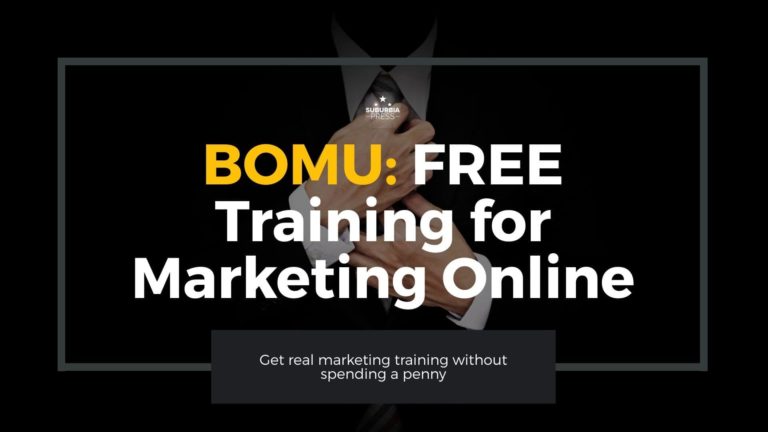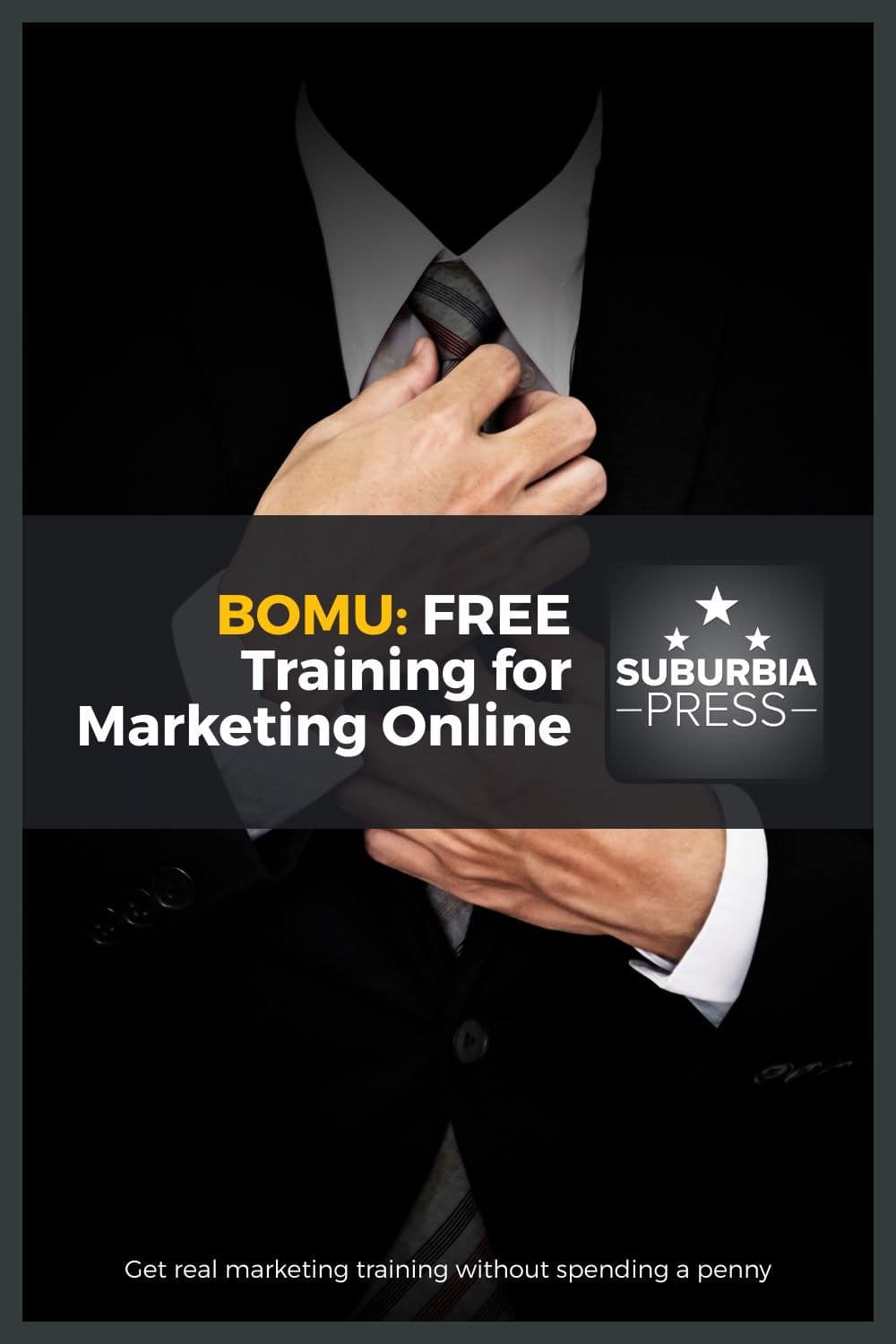Generate Traffic to Your Web Site
Look where you started. Look how far you’ve come.
Everything is ready for visitors, but there’s one problem.
Every new site starts without any visitors. It’s up to you to encourage people to visit your site and start participating in all the wonderful things you prepared.
This article is all about the opportunities and actions that you can take to attract visitors and generate traffic to your website.
What is Web Traffic?

Web traffic merely refers to the visitors to your site. Not all traffic is equal or valuable, though. Driving traffic is vanity. Driving relevant traffic is just good business.
There are a number of ways to generate traffic to your website, but you need to consider your approach so that you get the right kind of visitors.
Let’s assume that your business niche is about healthy living. One popular method of attracting visitors is to give away something of value.
If you give away an iPad or a new PlayStation, you’ll attract plenty of people who want those devices.
How many of them are actually interested in healthy living?
You may get fewer people if you offer a giveaway related to healthy living, but those people are more likely to stay around and potentially buy something from you later.
You need relevant traffic in order to conduct business. Offering exciting or glamorous prizes just to get a high number likely yields poor results. Try to attract people interested in what you offer for sale.
How to Generate Traffic to a WebSite
It’s a pretty simple idea to generate traffic. You need to arrange circumstances so you can present a resolution to a person’s needs.
If you don’t do that, none of the techniques below will have the effect you want. Traffic for the sake of traffic or for mere curiosity, or even to exploit your free offer, won’t advance the purpose of your site.
My presumption is that you’re in business and want to attract leads, which you can then convert into customers. That’s a good thing.
The proven techniques below can work to generate traffic. However, you want to generate targeted traffic; people who have the potential to convert into customers. Anything else will waste your time and money.
1: Advertise
One of the age-old methods of attracting an audience to generate traffic is through paid advertising. Businesses have used advertising for centuries for one simple reason.
It works.
Share what you offer with a group of people who may have an interest and some of them, hopefully, will turn into customers.

It worked for Benjamin Franklin. He pioneered the practice by sharing the first known advertisement in his General Magazine in 1741 and also in the Saturday Evening Post – something still in business today.
In the modern age, you can advertise on Facebook, Google, Pinterest, Twitter, and other sources. The key is to define your target audience (which you did in the Planning stage of your business) and craft a message that they want to hear.
Of course, there lies the flaw of advertising.
It’s all about the audience who wants a message. Get that wrong and you end up throwing your money away.
Think of advertising as if you were pouring gasoline on a fire. If you don’t have a fire, all you get is wasted gas. You need an offer that you know converts when presented to the correct target audience.
When that happens, advertising amplifies your message and drives traffic to people who will convert.
Otherwise, advertising is like peeing in the ocean. You start off with a warm feeling, but you’re the only one who knows it.
2: Social Media
I have to admit that I’ve not mastered social media as a means to generate traffic. Others have.
I’ll share this wisdom I received from someone who succeeded in social media marketing.
Social media is supposed to be social.
Jasmine Starr
She shared that nugget of wisdom at Amy Porterfield’s Entrepreneur Experience conference in San Diego, 2019.
I can’t tell you much of what else she shared because that one piece of information explained all of my previous failures with social media marketing.
Many entrepreneurs use tools to broadcast every blog post they write or YouTube video they post. Others spout posts about sales, discounts, and offers.
That’s not what people are into social media, though. In fact, I think most of the audience there wants to get away from those types of messages.
People on social media want to discuss things that interest them. They want to engage with people on a social level.
It’s that simple.
Despite the social aspect, some users like to reach out to a business on social media to ask a question, get help with a problem, or just complain.
That’s why I think it’s worth having a social media presence. Even if the incoming message is a complaint, it’s an opportunity to demonstrate how you handle problems.
Your response may turn off some people if you handle things poorly, but you can also win some people with a genuine customer-first, serve-first attitude.
That’s something I’ve found when I’m a customer with a question, concern, or problem. How someone handles the problem makes a difference to me as a customer. I bet a lot of people feel that way, too.
3: Search Engine Optimization (SEO)

Search engine optimization (SEO) is a set of actions you can take to make it easier for search engines to understand and organize the information you post on your website, and to appear in special rich snippets or featured snippets.
The result, ideally, is to have your information show up on the first page of a search result for a keyword, making it more likely that a user will choose your page to visit to get the result they want.
Search engines are protective of their users. They want them to have the best experience possible and refer those users to the best results. If you want to rank high for a search term or keyword, then you need to present your page in the best light – optimized for users and search engines.
Here are a few things you can do to help optimize your posts and pages for search engines to rank above your competition for a keyword.
Understand User Intent Behind the Search
It’s tempting to just sit down, write your article and hope that someone finds it. A lot of people take this approach. Maybe it’s because they don’t rely upon SEO to generate traffic or possibly they don’t know how to optimize their pages for search engines.
As you browse the results for your searches, you’ll often find pages and pages of results. How often do you go look at those pages that didn’t rank on the first or second page? Maybe there’s gold back there, but you have to work harder to get it.
Most people won’t do that. They take what’s presented on the first page and ignore the rest. That’s why SEO is vital to generate traffic to your pages for free.
The first step in understanding how to rank your page in a search engine is to understand what people search for and their intent when they search.
A user’s intent varies depending upon where they are in their journey. Here are a few examples.
People who include the words “what” or “why” in their search phrases are trying to learn something. They aren’t ready to make a purchase. If you want to capture their attention, write articles that answer specific questions.
The next phase in the search journey is for people who understand the concept, but don’t know how to implement it. These folks are using words like “how” in their searches.
They have an understanding of what SEO is and why it’s beneficial to them. Now they need to understand how it works and what they need to do in order to implement the subject of their search. These users may have an interest in buying, but they need to know that the product can give them the result they desire.
When you get to search queries with words like “review” or “vs”, these folks are ready to make a buying decision. They’re just fine-tuning their searches to get the right product for their needs. Reviews and comparisons can help visitors who know they want to buy, but they expect the results to be honest.
Understanding the searcher’s intent allows you to craft articles that help them at each stage of their journey. Sometimes they don’t even know where that journey will lead.
A homeowner with a pool may conduct a search to try and identify something suspected to be a problem.
“What is this green stuff on my pool tiles?”
That search tells them they have an algae problem. So their next search could be something like this:
“How do I get rid of algae in my pool”
You could recommend a product, but it’s still a good idea to educate the person on different methods to eliminate algae. This is an opportunity to earn trust as an expert or authority.
“Best Pool Algae reviews” or “AlgaeX vs AlgaKiller”
When you get to this level of search, the user knows what problem exists and has an idea of how to eliminate the problem. Now the user wants to find the “best” product or method to achieve the desired result.
Keyword Research

On a surface level, search engines operate on a simple premise. Someone types a query in an entry box. The search engine finds and presents relevant articles in response to that query. Then the user picks an article in hope of getting the resolution they wanted.
The search query contains keywords – specific words, terms or phrases that get to the heart of the request. Search engines no longer match word for word. They use algorithms to determine the results that may use related words to deliver the best result.
Your article may rank for keywords that you never intended because of the way search engines infer the query a user makes.
That means you don’t have to stuff your article full of keywords in order for the search engine to understand what you’re talking about. We’re past that system of gaming search engines. In fact, that approach may backfire on you.
The best approach is to write your article for the people who are reading it, not for search engines trying to identify a specific keyword.
So keep your articles on-topic.
That said, there are still times when you need to know what your ideal visitor wants to find. Some related search terms provide different responses. You want to know which terms can help you reach the right audience.
That’s not always the largest audience. There’s no point in attracting visitors who will never buy anything from you. This is where keyword research comes into play.
Let’s say that I want to prepare an article or video for portrait photographers who want to use skin smoothing software.
As we saw in the previous section about search intent, I need to consider where the user is in the journey to know what kind of article or video I want to create, and how it attracts their attention.
Assuming they know what skin smoothing is, they probably want to know how it’s done. Maybe I could answer queries like:
“How to use Photoshop for skin smoothing”
“Skin smoothing techniques”
You may get a recommendation from the search engine to change your query. That’s because search engines may know popular queries with better results, so they try to guess your intent and guide you to the right query with the best results.

If I choose to accept the suggestion, I get 3,420,000 results. Let’s say I use my second query and ignore the suggested queries. I get 4,230,000 results.
Which is better?
I’m not going to go through millions of results for either query. However, I’ve learned that this search term is popular. A crowded market means opportunity exists.
The next thing I’m going to do is look at the top results for each query and try to answer this question.
Can I create an article or video that’s better than the top-listed results and outrank them on this search query?
The answer may be different for each search query.
There’s another factor to consider. Are the search results different on mobile than on desktop? Search engines emphasize mobile-first for ranking results, but they still want to give the best experience to all customers.
So are your potential visitors more likely to look for answers on their desktop or mobile device?
Search engines want to provide the best results to their users, and more people are searching on mobile devices now. It’s up to you to understand the user’s intent, determine which keyword searches are most relevant and provide an opportunity for you to rank better than your competition.
There are a plethora of tools and techniques for keyword research beyond what we can discuss in one article. However, the objective remains the same.
Attract the right audience at the right stage of their search journey.
Use Longtail Keywords
Longtail keywords are typically phrases that have lower search volume. As a result, they also often have less competition to rank in search engine result pages (SERPs).
While there are hundreds of factors that go into ranking, one important factor to consider is your Domain Authority (DA). That basically refers to how trusted your domain is by other domains. One metric to create domain authority is backlinks from other domains.
People link to a page because they want to provide useful or relevant information. It’s an indication of trust.
While it’s true that search engines rank Pages, not Sites, they also pay attention to how many backlinks refer to pages on a site. More backlinks mean more Domain Authority.
So if you have a new site with relatively few backlinks, you’re not going to rank against a site like Medium.com that has a high Domain Authority if you’re trying to get a competitive keyword where Medium.com has a desirable position.
Instead, go after the low-hanging fruit – longtail keywords.
The advantage of longtail keywords is that they’re more specific. They’re the kind of queries users make when they’re closer to a buying decision of a specific item.
My wife is an endurance runner, so getting the right socks is very important to her. She won’t do a search for a generic phrase like this:
“Best socks for runners”
That query will lead to more informative articles about different types of socks. She’s already knowledgeable about the types of socks. However, she may search for:
“Best compression socks for ultramarathon trail runners”
People who create a search like that know what they do and want to find a product for their specific needs. There’s less competition for this kind of longtail keyword, but the potential payout for ranking high here is great.
Use Structured Data (Schema)
Structured Data, also called Schema, is information that your page can present to a search engine to provide information that describes the content. You can use structured data to tell search engines if your page type is one of the following:
There are other types of Structured Data. They’re based upon standard templates defined at Schema.org. The fields used in these templates include some required and some optional fields.
Google claims that using Structured Data isn’t a ranking factor, but I think that’s somewhat misleading.
Rich snippets and Featured snippets appear on some Google SERPs, but only when the page uses Structured Data to provide specific and relevant information. For example, you’ve likely seen reviews with Star ratings in the results. That information comes from Structured Data
While those stars may not cause a higher ranking, they are very likely to get a higher click-through rating because users tend to prefer reviews with Star ratings.
A higher click-through rate is a ranking factor. The more people who click on your result in a SERP indicates to Google that people like this result, so it moves up the ranking as more people choose it.
You may also get a Featured Snippet, which shows at the top of Google SERPs. While your actual result may be lower down the page, people are more likely to click the nice Featured snippet with photos or details because it’s right in front of them with a big, bold presentation.
Again, that action improves your click-through rating.
You won’t get any of these clickable results if you aren’t using Structured Data.
You can get schema markup for your posts and pages using tools like RankMath Pro or Schema Pro.
I use both tools, but I prefer Schema Pro for my structured data. There may come a time when I want to replace my SEO tool, just as I replaced Yoast with RankMath Pro. Having stand-alone tools for my Structured Data provides me with greater continuity.
Also, I simply think that Schema Pro does a better job and I like the way that I can have multiple types of schema on the same page. Either tool can work, but I find Schema Pro is a bit better for my needs.
Internal Linking

Another way to demonstrate structure is with your site organization and internal linking of posts and pages.
This article is a good example. Let me explain.
There’s a concept known as a Pillar Page. These are typically long articles that cover all of the aspects of a topic, at least at a surface level. Other posts and pages can go in-depth on specific areas of the topic.
The pillar page can link to the detailed topic page during the discussion of that aspect. Likewise, the in-depth page links back to the pillar page for a broader discussion of the topic. This interlinking is good for users to navigate and find more information, at different levels of detail, about a topic that interests them.
Search engines like what people like. Internal linking shows relationships between articles and defines site structure.
I’m not writing this page, or other pillar pages, with search engines in mind. It’s not about trying to earn a ranking for keywords. Instead, the intent here is to think about helping the reader by explaining topics, and then creating a series of more detailed posts to provide in-depth explanations.
Essentially, Pillar Pages are content clusters. Everything that I write about how to generate traffic in the future will have a relationship with this page. Users who read this page will have plenty of links that take them to detailed articles on different aspects to generate traffic.
Of course, it takes time to write those articles, but you have to start somewhere. As more articles link to this page, and this page links to more articles, its value as a resource on the topic increases.
Pillar pages help SEO by concentrating your efforts to stay on topic and be useful to your visitors. They increase internal linking. Search engines who crawl these pages understand the topics and relationships, which provide ranking factors as you demonstrate expertise, authority, and trust on a given topic.
If you already have a site full of posts and pages that aren’t well established with internal links, I recommend using the Link Whisper plugin to identify your opportunities to improve.
Link Whisper scans your pages and determines which ones have (or lack) internal inbound links, internal outbound links, and external outbound links.
An internal inbound link shows that another post or page on your site links to the article you’re reviewing.
An internal outbound link shows that the page you’re reviewing has a link to another article on your site.
Finally, an external outbound link shows that the article you’re reviewing has a link to an external site – which is good for SEO, also.
Pillar pages are your opportunity to be helpful to visitors on your topic, whether they’re just starting to learn about an issue, they want to know how something works, or if they’re ready to make a buying decision.
Your strategy of creating relevant articles and linking to the next step in the journey can be incredibly powerful as both a source of information and a sales generation tool.
4: How to Use Content Creation Strategies to Generate Traffic
Here’s a little secret of mine. I absolutely hate the word “content.” It’s incredibly generic and practically useless to the way my mind works.
However, it’s become an industry-standard term to refer to articles, videos, podcasts, or any other form of information that you create. I actually prefer the word “information” rather than “content.”
At least the information is useful. Content can fill a sewer.
In any case, there are different methods for you to gather and share useful information with your site visitors and audience. Those methods are informative, but they also provide an opportunity to generate traffic and lead people back to your site.
Guest Blogging
One of the original forms of using the information to generate traffic to your site, guest blogging is still pertinent.
Some years ago, Google took notice of the trend to use guest blogging as a ranking factor and decided to squelch that method. That doesn’t make it useless overall, though.
Guest blogging is a way of serving another audience and getting known as someone with expertise or authority by that audience. In other words, SEO isn’t truly the reason for guest blogging.
Even a mention with a backlink on someone else’s site can have significant results.
I have a photography blog. One day, an influencer in the photography community named Scott Kelby mentioned me and provided a link to my site within one of his regular blog posts.
The next day, I saw that I had 1500 visitors from his site.
That came just from a mention and I hadn’t even written a thing to add value to his audience. Imagine if I wrote a useful guest blog for Scott Kelby (which he accepts weekly) and then prepared a specific page or lead magnet to receive visitors who came as a result.
Guest blogging is a great way to generate traffic by serving others. The key is to add value and be prepared to offer something to the visitors from the site who allowed you the privilege of addressing their audience.
There’s one thing to consider. Watch out for sites that openly ask for guest posts. Google and other search engines actually penalize links from those sites in the search results. So while this is good to get attention from people on another site, it may be problematic from the SEO perspective.
Create a Podcast

For years, I’ve operated a photography podcast associated with my photography site. This approach can also generate traffic by addressing people through audio and referring them to your site for show notes, courses, reviews, or whatever else you have to offer.
In my experience, the best offers to generate traffic on a podcast are for very specific items of interest to your audience and a specific topic for the podcast episode.
My site has a couple of courses. One for Luminar AI users and another for Lightroom Classic users. If I do a podcast episode on a Lightroom topic, it doesn’t make sense to have a call to action for my Luminar AI course.
Naturally, I want to direct them to my course that relates to Lightroom if the episode topic is about Lightroom.
You can do the same thing even if you don’t have a course. Affiliate marketing is a way to discuss a problem and refer to a product or service that addresses the pain point the listener experiences.
You can use a tool like PrettyLink to create a URL that redirects the listener specifically to a page with more information. That could be a review on your site, or directly to the vendor as an affiliate link.
Affiliate URLs tend to be rather long and hard to remember. PrettyLink uses redirects to make it easy for someone to remember and access the information they want.
So instead of asking a podcast listener to visit something like this:
affiliate-site.com/ref-id=40344939 (that is not a REAL URL)
You could send them to something easily understood, like this:
https://suburbiapress.com/welcome (that IS a real URL via PrettyLink)
Conduct Interviews
In every field, there are interesting people. They have an audience and other people who want to know more about them, what they do, how they do it, why they do it, and what benefits come as a result.
As an interviewer, you become a conduit between the interesting person and the audience who wants to know more about them.
Why do you think magazines exist to interview celebrities? It’s profitable.
When done correctly, interviews combine curiosity with education. People want interviews that answer their questions, teach them some technique or recipe to achieve a goal, and also satisfy some curiosity about your subject.
The other side of the coin is giving the interviewee a reason to take time from their schedule to help you generate traffic. Fortunately, they have their own motives.
Sometimes an interview subject will have a genuine desire to share, but most of them want to reach an audience with their message.
They may use your interview to create a message and promote it to their audience to listen. It’s a mutually beneficial relationship that helps you generate traffic and does the same for them.
If you don’t have much of an audience, you’re unlikely to get a top-dog subject to help you get started. That’s because the mutual benefit of an interview is severely uneven when you’re just getting started.
You may do better working with people who have something interesting to share with your audience and still serve their need to get an exposure.
Keep in mind that a potential interview subject may be more inclined to participate if you make it easy for them. For example, ask for an interview if you’re both going to be at the same conference. The demands upon their time may be different than when in their usual environment.
Roundup Posts
The idea of a roundup post is to get multiple takes on the same topic or issue. There are two ways you can do this.
The first method is to give your own opinion on multiple products or services that address the same problem.
Another method is similar to an interview but more specific. You ask experts and authority figures in your niche to give an answer to a single, specific question.
“What’s the one thing you wish you knew before you started professional mud wrestling?”
This kind of roundup post makes it easy for the experts to participate. They can just answer an email for a blog post. If you’re at a conference, perhaps you can get an audio or video recording while everyone is in the same place.
Much like an interview, this kind of participation enhances their status as an authority in their field. Their audience will want to know what answer they provide. It also introduces them to people who weren’t aware of their presence and experience.
Comparison Posts
People who are close to a purchase decision often want to compare products. That’s why holidays often have a lot of posts about “The perfect gift for your perfect man” or “The best camera for Youtube.”
You never know which product will push the right buttons for a given visitor. So here’s your chance to go through the features and benefits, not to mention the flaws, of related products.
Put an affiliate link on each one and you may generate sales that exceed a Review post that only discusses a single product.
Comparison posts work well if you can create a side-by-side table showing each product and comparing the same set of features. Some may have a green checkbox or a red X to denote if the product does something or not.
These types of posts provide a useful service to shoppers who just want factual information to help them make a purchase decision.
The goal is to attract people who need information and have money in hand. They may be motivated by price, features, benefits, or brand. Maybe they like the red one better than the blue one.
Doesn’t matter. They’ve already decided that they want to buy something. Your role in a comparison post is to help them understand which is the best choice for their needs.
Answer Specific Questions
Not everyone who goes to a search engine wants to buy something. Many people want to learn something or solve a problem.
I have a page on my photography site that answers a very specific question about a problem with Adobe Creative Cloud.
There’s a flaw that can lock people out of their programs and, unfortunately, Adobe didn’t truly have an answer that was easy to find. Adobe also makes it extremely difficult to call them for support.
You can imagine that people who rely upon Photoshop, Lightroom, Premiere Pro, and other tools have a major productivity problem if they get locked out and can’t find an answer.
I found the answer and wrote an article that drew a lot of traffic.
That was good as a public service, but I didn’t think it through. The folks who searched for that answer didn’t have an interest in anything else I provided. So while I got traffic, it wasn’t relevant traffic.
They came in, got the answer, and left. My bounce rate exploded. Google thinks that a visitor who comes to your site reads one page and leaves is actually dissatisfied by their visit. So Google takes that as a ranking factor and diminished my domain authority.
Google is stupid.
Those folks got EXACTLY what they wanted. To them, the search result was a success. It was my fault for providing an answer to a problem that didn’t support the main message of my site.
So it’s good to answer specific questions to generate traffic. However, beware of answering questions for people who are not your audience. People who fly in, get an answer, and never return can actually damage your reputation with search engines.
Use Video

More people like learning from video than text these days. If you have a relevant video on YouTube, Google may feature it at the top of a search result.
Embedding videos on a web page is actually a ranking factor for videos on YouTube. You can have a mutually beneficial relationship by creating links between your website and your video on YouTube.
Even if you don’t prefer to use YouTube, your visitors may still want to learn from Video. I use a service called Searchie to host my video, transcribe it, and then share the results as a transcript, audio recording, or video on my site.
Searchie makes it easy to distribute your information in multiple ways.
With YouTube, you can share links to your site, specific pages, or affiliate offers in the description. I’m seeing a dramatic increase in affiliate sales by featuring products on my YouTube photography channel.
After all, YouTube is the world’s second-largest search engine. It’s another way to spread your message, attract an audience and convert them into customers.
5: Generate Traffic as an Influencer

An influencer is someone seen as an expert or authority on a topic and has the ability to persuade purchase decisions.
It’s a form of marketing based upon your reputation within a niche.
My opinion is that being an Influencer is a slippery proposition. I think there’s a right way and a wrong way to do it, but everyone has an opinion.
The right way to be an Influencer, in my opinion, is to serve first. Be helpful and genuine. Demonstrate your knowledge and expertise by helping others, and you will build authority and trust.
Look for incremental gains. Adding 1% improvement yields better results than swinging for the fences, and you can’t determine the pace of your growth. All you can do is be present, be kind and be helpful. The rest ought to come as a result.
The wrong way to be an Influencer is to think that you’re better than the people you help. I’ve encountered a lot of snotty Influencers with a “better than thou” attitude. It immediately turns me off and destroys their credibility in my eyes.
Yet others may not see those flaws. In some cases, people think of an attitude as a sign of strength.
I’m all for having a bit of an attitude, but I’m not a fan of using it to denigrate others. I think self-confidence is a good thing and it’s OK to show that you know your stuff. Just don’t do it at someone else’s expense.
You can’t prop yourself up by putting others down. That kind of success won’t last.
So how do you define yourself as an Influencer?
Participate in Discussion Groups
There’s no shortage of discussion groups for different topics on the Internet. Facebook and Reddit are likely the two most popular areas to find and participate in discussions. LinkedIn and Quora are also worth investing some time in.
The key is not to try and market to someone else’s audience inside of a discussion group. That’s just ill-mannered and likely to get banned and labeled with a bad reputation.
Find a discussion group that isn’t directly related to your main offer, but allows you to answer questions that support others in the group.
Suburbia Press came out of that notion. I started taking online courses for marketers and entrepreneurs because I planned on creating a different business.
What I learned is that many of the students in these courses are very excited to build their business online, but they don’t have experience with the technology involved. Some are downright frightened of it.
With a few decades of IT experience and a decent ability to explain concepts, I decided that this is an area where I can help and provide answers to online entrepreneurs so they can confidently build a platform to power their business.
With that approach, I’m not competing with the people who teach these courses. I’m providing supplemental support for their audience that the instructors aren’t able to address in much detail.
If I do this well, everyone wins.
Attend Conferences
In 2020, we entered a world of virtual conferences. While it was possible for the presenters to teach online, the social and networking aspect of virtual conferences was an utter failure compared to being in the same space and talking face to face.
Some virtual conferences tried to compensate for this by forcing their participants into groups, rooms or tables online.
What usually happened is that nobody knew why they were there, or they figured it was a good time to go to the bathroom.
Networking isn’t a forced affair. People meet at conferences while standing in line, introduced to each other by friends, or by showing up at the same party.
Personal interaction is critical to networking. Some people resonate with each other and some don’t. You need visual clues, body language, and a host of other factors to help you decide how to interact and be known.
You’re never going to meet everyone at a conference, but you are going to have shared experiences with a lot of people. That gives you something innocuous to discuss and build rapport.
Those little shared experiences are what help drive meaningful conversations or relationships later.
It doesn’t always work the way you expect. I went to a photography conference a few years ago determined to meet some specific photographers, YouTubers, etc. Almost every one of those attempts failed awkwardly if they even got started.
Some of the YouTubers were just downright full of themselves (bad Influencers) and I had a miserable time.
At least that’s how I felt until the last day. I met someone who I didn’t expect to meet, and he had a LOT more skill and authority than anyone I wanted to meet. He and his wife were genuinely friendly. They invited me to their house in Las Vegas to attend a little party with some other folks.
It was at that house where I met some like-minded people and shared values. Quite accidentally, I found my people. It changed my sense of purpose and direction for the better.
When you attend the same conference year after year, you see some of the same faces and develop friendships. Each conference becomes a reunion, and your circle expands.
It’s difficult to start in a new conference environment, but I think it’s one of the best ways to meet people and start developing your influence.
Build Your Email List
I have another detailed article on building your email list, so I won’t repeat it here. Instead, I’ll just use this to show two examples:
There’s More Than One Way to Generate Traffic
I hope this article gives you some ideas about how you can get visitors to your website. If I had to summarize everything in this article rather simply, it would look like this:
I know that sounds simple, and the objective should always be simple. There are thousands of details that support this summary, and that’s what I intend to provide here on Suburbia Press.
If you haven’t subscribed yet to our email list and received a FREE PDF on how to optimize performance on your WordPress site, here’s your chance to join us.
Thanks!








